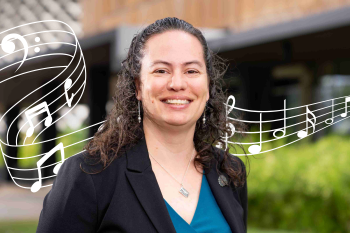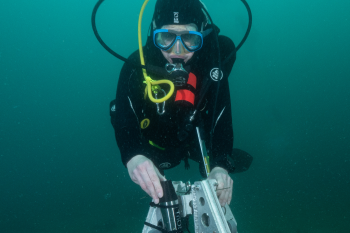© Pint of Science, 2025. All rights reserved.
Teleportation, time travel, and mind reading, for so long have been associated with science-fiction that many of us can’t perceive them as ever being non-fiction. So, you might be surprised to hear that mind reading has been around since 1924.
One day in 1893, the 19-year-old Hans Berger was injured when he fell off his horse. To his surprise, he received a telegram later that day from his sister asking him if he was alright. Despite being several kilometres away, she had received a bad feeling about Hans coincidentally at the same time he hurt himself. Hans thought this was no coincidence, but rather a case of “spontaneous telepathy”. Curious about how thoughts could travel between people, he took up psychiatry and ended up inventing the electroencephalogram (EEG).
The EEG is a helmet of electrodes that sits on your head and picks up the tiny electrical signals being created by the neurons in your brain as they communicate with one another. With his EEG, Hans was the first to observe brain waves.
Since 1924, the EEG has evolved to be more precise in picking up signals from certain parts of the brain, and it has become more sensitive to the electrical pulses that are very faint after travelling through the skull and scalp. To increase the precision of the signal detection, sometimes the electrodes - rather than being placed on the scalp - are temporarily removed to place the electrodes directly on the surface of the brain. This technique is rightfully called an intracranial electroencephalogram (iEEG).
Bellier et al.’s (2023) study from the University of California, Berkley, implemented this technique to recreate songs from neural scans. 29 epileptic patients who already had electrodes on their brain for diagnostic purposes, listened to Pink Floyd’s ‘Another Brick in the Wall, Part 1’ whilst their brain’s electrical signals were recorded.
The audio first plays a segment of music from the original song, and then the same segment of music that has been reconstructed from the collected brain signals.
The generated music might not be a perfect recreation, but this research has taken a big step in our ability to bring voice to those physically unable to speak. Technology to translate brain signals to text has been around for a few years, but it is considered devoid of tone and rhythm. However, the vocalising of brain signals will allow tone and rhythm to be integrated into brain to voice technology - granting an additional degree of vocal freedom that many of us take for granted. As the neuroscientists said in their original paper, we have added “another brick in the wall of our understanding of music processing in the human brain”.
References:
Bellier, L., Llorens, A., Marciano, D., Gunduz, A., Schalk, G., Brunner, P., & Knight, R. T. (2023). Music can be reconstructed from human auditory cortex activity using nonlinear decoding models. PLoS biology, 21(8), e3002176.
İnce, R., Adanır, S. S., & Sevmez, F. (2021). The inventor of electroencephalography (EEG): Hans Berger (1873–1941). Child's Nervous System, 37, 2723-2724.
Cover Image Source Credit:
8figuremafia. (2020, June 17). The Brain. wikimedia commons. https://commons.wikimedia.org/wiki/File:The_Brain_.jpg




